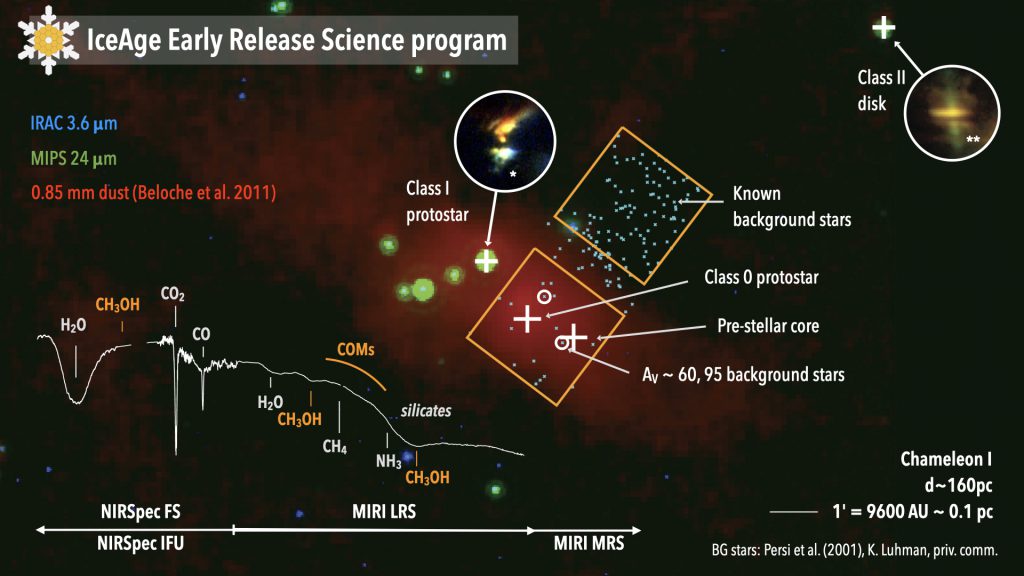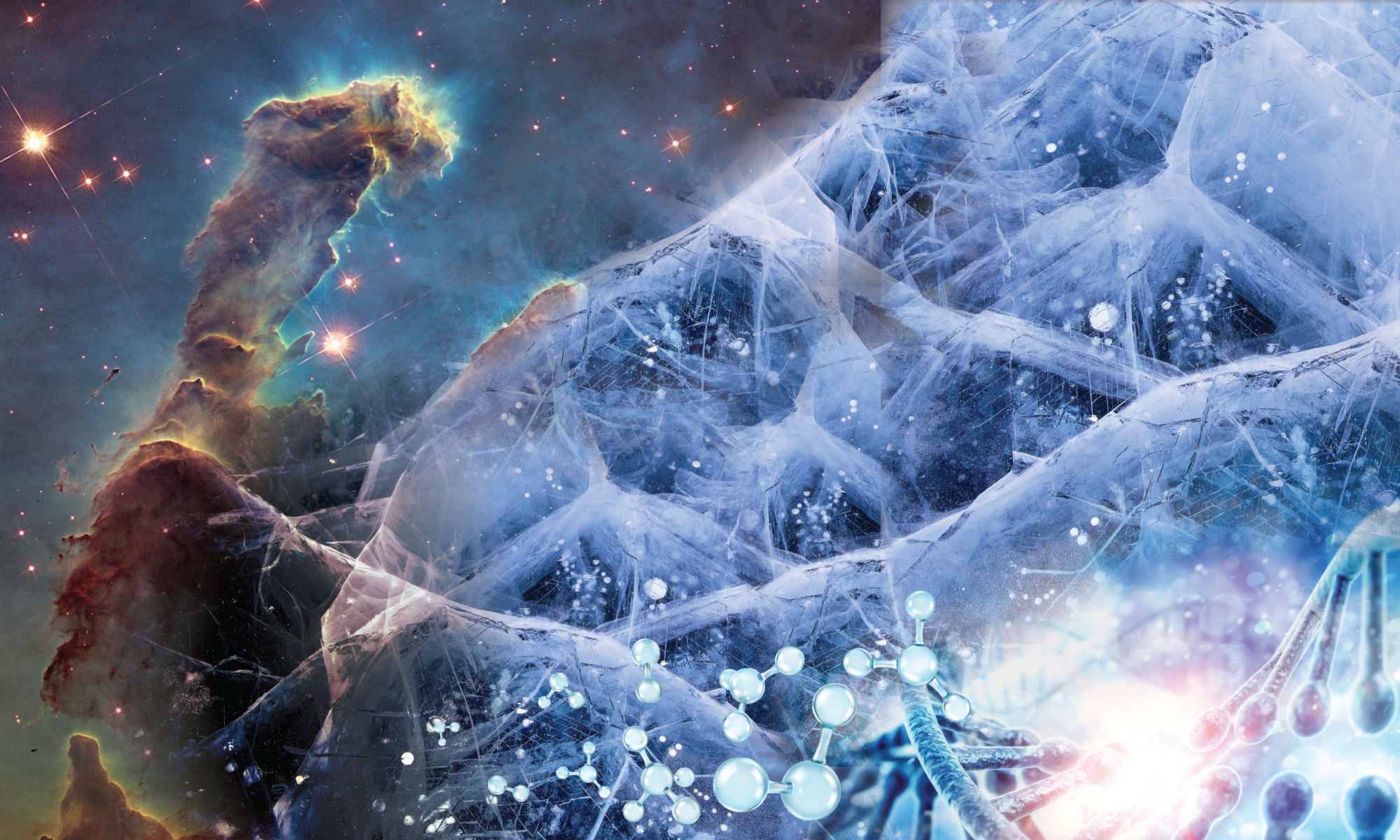
Our program will observe a dust ridge in the center of the Chameleon I molecular cloud. Embedded within the ridge are a known pre-stellar core, a Class 0 protostar, and a Class I protostar. The pre-stellar core and Class I envelope are probed by background stars. Further away from the ridge is an edge-on disk. These targets are indicated with crosses above. Therefore with minimal overheads we can observe ices at all stage of the star formation sequence.
We will observe the background stars towards the pre-stellar core and Class 0 with NIRCam’s Wide Field Slitless Spectrograph (WFSS) mode, the footprint of which is pictured above. Additionally, two of the background stars with the highest visual extinctions, 60 and 100 magnitudes, will be targeted using both NIRSpec’s Fixed Slit spectrograph (FS) and MIRI’s Low Resolution Spectrograph (LRS) modes. The NIRSpec FS will act as a secondary comparison for our NIRCam WFSS observations.
The Class I protostar and the edge-on disk will be observed with both NIRSpec’s Integral Field Unit (IFU) and MIRI’s Medium Resolution Spectrograph (MRS) modes, which will provide spatial maps of the ices in these resolved targets. The Class I protostar will also be observed with the MIRI LRS mode, for comparison of the defringing capability of the MRS mode.
The technical details of the program, including the APT file and observing schedule, can be found under our program page at the Space Telescope Science Institute. As of January 2023, all of our program data are complete except for the MIRI MRS observations. The raw data can be found on the MAST archive. Enhanced data can be found on our Science Enabling Products (SEP) page.

